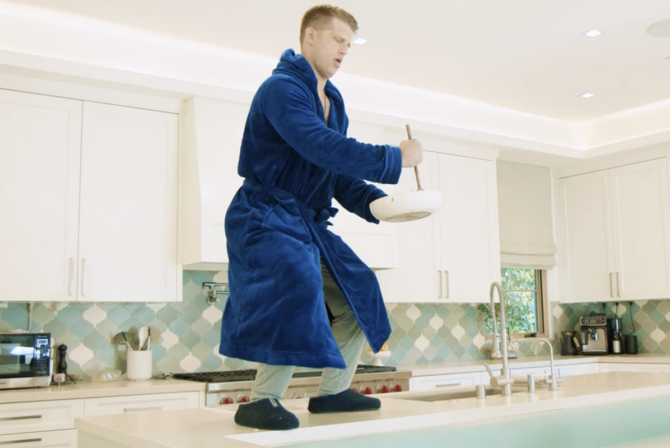Feeding your baby is tough, no matter how you’re doing it.
Bottle feeding can be a tough subject for moms, especially since everyone has a different opinion on what’s best for your baby. Maybe you have to go back to work, maybe you chose not to breastfeed or can’t—whatever the reason, you’re battling with your baby to eat. And you’re running out of ideas.
One mom recently came to us for help: After exclusively breastfeeding, she’s going back to work really soon and her 2-month-old won’t take a bottle. Of course, we’re here to help.
We asked our friends on Facebook about their tips and tricks to help their babies get their bottle groove on. Here’s what they said:
READ: Tips for Breastfeeding (Or Not) From Kveller Writers
1. “Have someone else try to give baby a bottle when mama is completely out of sight. I’ve heard it works. Good luck!”
-C
2. “This happened to me too. Make sure the bottle you use has a slow flow nipple, since most standard nipples flow too fast for babies used to exclusively breastfeeding. Once we switched and stopped waterboarding the poor girl, things improved! We used the Dr. Brown bottles, and they were great. There are plenty of other slow flow bottles, though, so experiment if a particular one isn’t working.
Also, have the bottle feeding done when mom is not in the room. Babies are smart and will protest the bottle if they think mom is nearby. I felt better just being out of the house to avoid hearing my daughter cry–so guilt inducing. The physical therapist who I work with in the NICU suggested trying cup feeding if bottle feeding was not working out, but we were able to get her on the bottle. Keep trying, and try to make it a calm, stress-free experience for baby and caregiver.”
-T
3. “Start giving a blanket/comfort object with every feeding now–nursing and bottle feeding–to help the transition. I had my daughter rubbing her hands on a particular object during each nursing session very early on, and then had everyone who gave her a bottle do the same.
READ: Teaching Your Baby to Sleep
When bottle feeding, hold the baby close to you almost in a nursing position, so the baby is still getting part of the comfort that s/he is used to. Then, experiment with lots of different nipples and bottle types. That’s what helped me. Also, the baby is a little more likely to take a bottle if he knows Mommy is not there.”
-C
4. “If you can have one person try with one bottle over the course of a few days, that would be helpful. In the meantime, talk to the child care provider and let her know what’s going on. Sometimes, they can put her in the room with the bottle expert–or at least have that person come over and try during feedings. This is a very common problem, so the providers are used to it, and usually one of the teachers is particularly good with this sort of thing. Sometimes you can hire that teacher to do practice runs the weekend before.”
-M
READ: What to Expect from a Lactation Consultant
5. “Try different nipples. I bought slow flow nipples by Medela, which were awesome. Also, make sure you are not home, or at least nowhere near the baby. My son is 10 months old and still will not take a bottle if I am anywhere near him. My husband would give him a bottle while I went upstairs to nap or shower. We did this since he was about a week old, so by the time I went back to work when he was 3 months old, he was used to being fed by bottle, and used to the concept that people other than me can feed him. It takes time, but hang in there. No baby on the planet is going to starve itself. If they’re hungry enough they’ll take a bottle.”
-E







